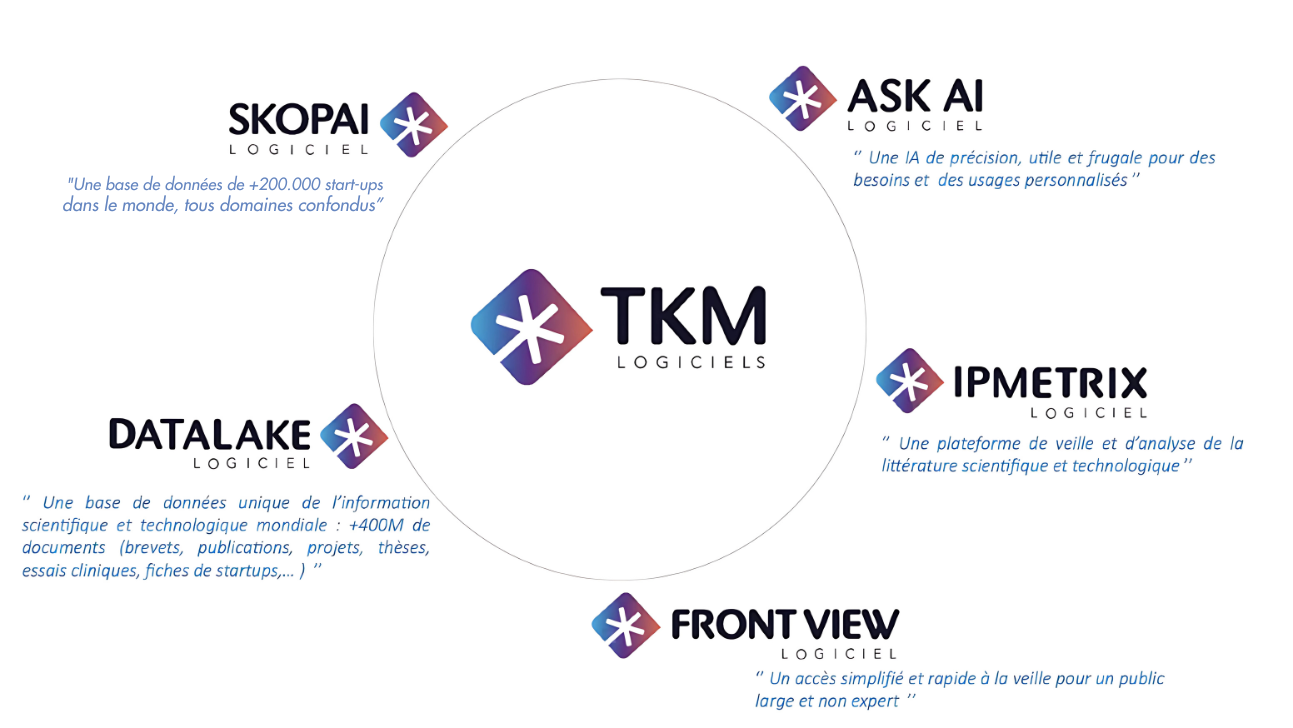Freedom of exploitation - or Freedom to Operate in English (FTO) - consists in determining whether a product can be marketed without breaking patents or intellectual property rights held by third parties. This guide presents the essential steps to navigate in this complex environment, while benefiting from the precious advice of our senior patent engineer, Catherine Derbois , to secure each phase of your project.
Freedom of exploitation: definition and issues
When you develop a new innovation, it is essential to understand how it can fit into the existing landscape of intellectual property rights .
The Organization for Cooperation and Economic Development (OECD) defines freedom of exploitation as a legal evaluation aimed at determining whether the manufacture , use or marketing of a product or process can be done without breaking the intellectual property rights held by third parties, such as patents, in a specific jurisdiction and at a given time .
What is the difference between freedom of exploitation and research of anteriority ?
The search for freedom of exploitation aims to verify that a product or process can be exploited commercially without breaking active patents, while the search for anteriority aims to ensure that an invention is new and inventive to allow its deposit in the form of a patent.
These well differentiated concepts, it is time to look at the concrete steps to secure your freedom of exploitation.
Step 1: Define precisely the object of your innovation
List its essential characteristics
The first step is to identify the specific object on which you wish to verify your freedom of operation . It can be a machine, a molecule, a marker, a product or a manufacturing process.
The next step is to determine the essential technical characteristics of this object, that is to say the elements which allow it to be operated and to give it its main function.
These characteristics must not only provide technical added value , but they must also be new and inventive compared to existing solutions. It is important to have an objective in this analysis, taking into account the facts and technical points really bringing something innovative.
How to do it?
To carry out this step, it is recommended to work closely with your engineers , as well as your marketing and commercial . They will be able to identify the technical aspects of the product and to identify the differentiating elements on the market.
As far as possible, it is recommended to limit the number of technical characteristics that you consider essential. An effective analysis should focus on 3 or 4 key points . This avoids getting lost in the technological monitoring and patent search stage that will follow.
Expert advice: "Don't scatter!" Focus on the aspects that really characterize your innovation. »»
Step 2: Search for relevant patents
The second step is to carry out previous art research, only in patents , focusing on the technical characteristics that you have identified. This phase is absolutely necessary to determine if existing patents claim these characteristics and could therefore block your freedom of exploitation. This research should be carried out on an international level, and in this context the quality of the base you use will be important.
Define keywords and actors
For each technical characteristic, you must:
- Define keyword lists that make it possible to precisely describe the functionality of the characteristic.
- Identify key players in the sector working in the same area of activity. This will help you target relevant patents and make sure that none is missing in this initial research.
Search in patent bases
Research must be carried out over a period of 20 years , because it is the maximum duration of validity of a patent. You will use these keywords and actors to do research in the patent databases available. Although there are bases with free access, this task can be complex and laborious.
Expert advice: “ To simplify and centralize your research, tools like IPmetrix are essential. They make it possible to aggregate the data of the different bases, to carry out targeted research, and to generate precise statistics on the results. »»

Step 3: Analyze your results
Analysis of patent claims for each of the 3 characteristics
Once the searches have been carried out, you will get a list of responses for each technical characteristic. Each characteristic must be subject to a specific request. However, the work does not stop there. You must then examine the claims of patents .
The claims are the part of the patent which has legal value, and they determine the scope of protection. You must check if the technical characteristic you analyze is claimed and whether it is associated with the functionality you develop.
The objective ? Identify whether a competing patent claims an identical technical characteristic or very close to the one you want to exploit for the same functionality. If so, your research is already successful because you have just identified a potential threat.
Verification of the legal status of patents
Once the relevant documents have been identified, you must examine their legal status . You must check:
- The countries in which the patent is filed.
- The validity of the patent in these countries (always in force or not): if the patent has fallen into the public domain, then the technology described is free to operate.
Possible scenarios
- If the patent is stopped (not valid), you are free to exploit technology in this country.
- If the patent is valid in some countries but not in others, you must analyze according to your manufacturing zones (where your factories are) and/or your target markets. For example, if the patent is still in force in a country where you do not plan to market or produce, you are free to operate in other countries.
Summary
At this point, you get a table that allows you to sort the patents in three categories:
-
- Unrelevant patents (they do not describe the targeted technical characteristics).
- Relevant patents but are no longer in force in the countries targeted.
- Relevant patents in force in your countries of interest and to analyze in more detail.
Advice of the expert: “ By treating your results in this way, you will get a clear list of problematic patents , those who could represent an obstacle to your freedom of exploitation . »»

Step 4: Check the protection of the object as a whole
Global analysis
Once you have analyzed the essential technical characteristics individually, it is time to switch to the analysis of the complete object . This implies checking if the entire device, which integrates all these characteristics, has already been protected by a patent. It is no longer a question of focusing on a single characteristic, but on the combination of these in a global device.
The objective of this step is to seek patents that describe a device similar to that which you plan to market. You must examine how identified patents structure and protect the entire object to check if they use one or more of the essential characteristics that you have defined.
-
- Search for patents covering the complete object: it is essential to identify patents that describe the object in its entirety and not only isolated elements.
- Analyze the documents selected: if a patent describes the entire system and uses one or more of your essential technical characteristics, this document must be kept for a more in -depth analysis.
- Eliminate unrelevant patents: if a patent does not cover the essential characteristics as a whole, it can be eliminated from the analysis process.
Advice from the expert: " Be careful, your watch does not stop there !" This research and analyzes being done on long time, it is possible that new patent demands have been made but not yet published at the time of your research ”
Step 5: What to do in the event of a blocking patent?
If a blocking patent is identified, several options are possible:
- Negotiation of a license : you can negotiate with the patent holder to obtain an operating license. This allows you to use the technology legally in exchange for a royalty.
- Technical bypass : It is possible to adapt your technology to bypass the demands of the annoying patent and thus avoid any violation.
- Contestation of validity : if you consider that the patent is not valid, you can bring together evidence (anteriority, etc.) to challenge its validity to the competent authorities.
Expert's advice: “ Negotiating a license is often more profitable than initiating costly legal procedures. Depending on the importance of the patent, you can base the royalty on the real impact of protected technology. »»
The main traps to avoid
- Understanding claims : focus on the patents issued , it is the claims that define legal protection.
- Minimizing commercial risks : do not underestimate the financial impact that a blocking patent may have on your business.
- Ignore the temporality of patents : patents evolve. Repeat an analysis 3 to 6 months before marketing to ensure that no new patent has been filed.
- Do not hesitate to consult an expert : a patent engineer or a PI advice will help you carry out good research and analyzes and then avoid expensive disputes.
Ensuring freedom of operation for your innovation is a complex process that requires centralizing and analyzing a large volume of information. A tool like IPMetrix simplifies this task by allowing you to centralize all data on your technical characteristics and patents, actively monitor and track developments by your competitors and the state of the art, and manage risks more effectively.
Our other tools can also support you in various aspects of your innovation projects:

In addition, support by TKM helps you avoid the main traps and secure your project. Do you need to be accompanied to innovate? Contact our teams!

